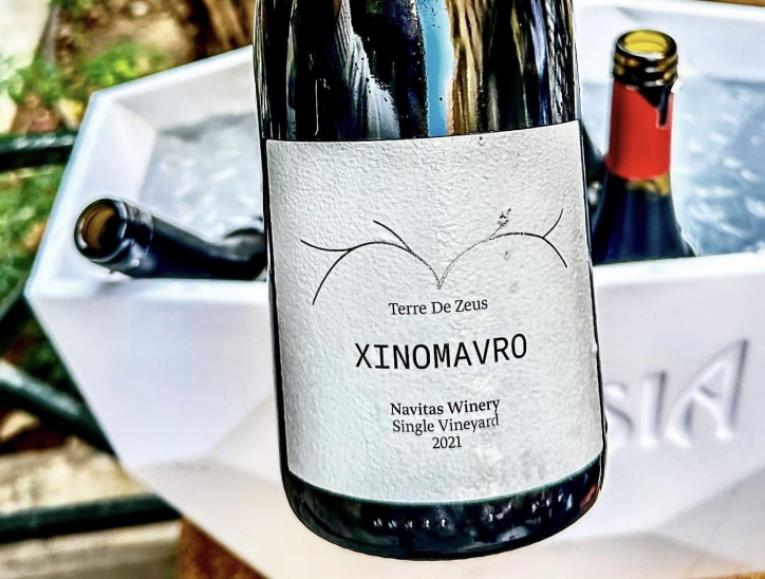50 Great Greek Wines | 2022, Impressions and Surprises
By Yiannis Karakasis MW
50 Great Greek Wines – The List a few weeks after the awards at Stavros Niarchos Cultural Center. I deliberately allowed a few days before I sat at my laptop to write down my impressions and attempt a small – compared to the first 50GGW – analysis of the results. If you want to see the analysis of the first 50GGW, I suggest you read the article by Terry Kandylis at www.karakasis.mw, the structure of which I will also be following.
Before I continue, Gregory Michailos and I would like to clarify, once again, that 50 Great Greek Wines is not just a competition but a tool which promotes the quality of Greek wine both within the country and overseas, and which awards the 50 best wines of those that participated. So, on to the analysis of this year's results:
Assyrtiko
Assyrtiko is now planted all around Greece, from Crete to Thrace, by numerous producers, and it covers 2.166ha (+13.4% within the last five years), so a multitude of entries was expected and so were the distinctions. Nevertheless, unlike in the first 50GGW that had 5 Assyrtiko wines among the first ten, in this year’s 50GGW, there were only 2, which allowed space for other varieties to shine. Of the 51 wines (we had a tie this year) on the list, 17 Assyrtiko wines were included, and the breakdown is: 15 Santorini, 1 Ritinitis (Retsina), and 1 Assyrtiko from Tinos. If these figures are compared to those of the 1st GGW, there were 12 Assyrtiko wines on the list (8 Santorini, 1 Resinated, and 3 Assyrtiko wines from outside Santorini).
Agiorgitiko and Xinomavro
In the 1st 50GGW, we had 9 Xinomavro wines and 6 Agiorgitiko wines (one of which was a blend) on the list, whereas this year, there were 8 and 3, respectively (of which one was a blend). Two factors are worth pointing out numerically the entries in both categories were about the same, and the style of Agiorgitiko that was awarded was that which had little or no oak ageing. Food for thought for producers of this lovely variety, which I think has fantastic potential.
The year of Limniona
Excluding the ''suspects'' mentioned above, it seems that this year was a tribute to Limniona, as 5 made it to the list! Once again, in terms of style, there’s a clear message from important people in the wine business such as Mark Andrew MW, Lenka Sedlackova MW, Demetri Walters MW, Stefan Neumann MS, Caro Maurer MW and Wojciech Bonkowski regarding how they see the prospects of Greek red wines. Finesse and fruit, together with a light character, are required for red wines.
Other indigenous varieties
As in the 1st 50GGW, the indigenous varieties were well represented by several different wines. Excellent results for Mavrodaphne (2 were on the list compared to 1 in 2020), while Mavrtotragano and Vidiano were represented with two wines each. One wine for Moschofilero in a grey/pink version (as in 2020) and one for Robola. This year there were no Savatiano or Malagousia wines on the list, although they came very close. Of the aromatic varieties, Muscat of Spina made it and was relatively high on the ranking. The unique and aromatic Dafni made an impressive comeback this year and was placed among the first ten. 2021 was a challenging vintage for the aromatic white varieties, which is probably illustrated in the results.
International varieties
It is exciting that three wines made from international varieties (Chardonnay, Syrah, Cabernet/Merlot) were placed on the list as this shows the diversity of the Greek vineyards. Moreover, Syrah, Merlot, and Pinot Noir were part of the blends with indigenous varieties of 3 more wines. In 2020 there were two wines made from international varieties and two more in which they were part of the blend. The results are congruent with the plantings in the vineyards, 95% of which are indigenous varieties.
Trends and surprises
The rise of Cretan wines is noteworthy, with seven wines on the 50GGW list compared to 3 in 2020. All were made from different Cretan varieties (Liatiko, Kotsifali, Muscat of Spina, Dafni, Thrapsathiri, and Vidiano that was represented twice). Macedonia had a notable presence with ten wines on this year’s list compared to 14 in 2020, whereas Cephalonia remained stable with two wines both times. On the other hand, the Peloponnese had 11 wines in the first edition; this year, there were only 6, and Central Greece had a slight decline with four this year compared to 5 in 2020.
There were two great surprises, and both made it to the top ten. Chidiriotiko, one of the rarest varieties indigenous to Lesvos, appears in a mineral, Pinot-Noir-driven style. But, maybe, the most impressive novelty was a Resinated wine in the second position, which paves the way for one of the most traditional styles of Greek wine.
A look toward the future
Our drive and enthusiasm continue along the same lines as when 50GGW began. Our basis is three-fold: small, flexible panels with internationally acclaimed judges, only 50 wines awarded (this year, only 11% were awarded!) and sourcing of samples from the market. At the same time, we are continuing our actions, e.g. on the 20th of June, another Masterclass was held in Budapest, and in July, a tasting/dinner will be held in Chalkidiki.
50GGW will not cease evolving. During the awards ceremony, I spoke of reinforcing the categories and separately mentioned sweet and resinated wines. Today, I will be giving you one more piece of information in the third 50GGW Cypriot wines will have a separate category; these are wines I have actively supported for years now, and I strongly believe in their potential.







